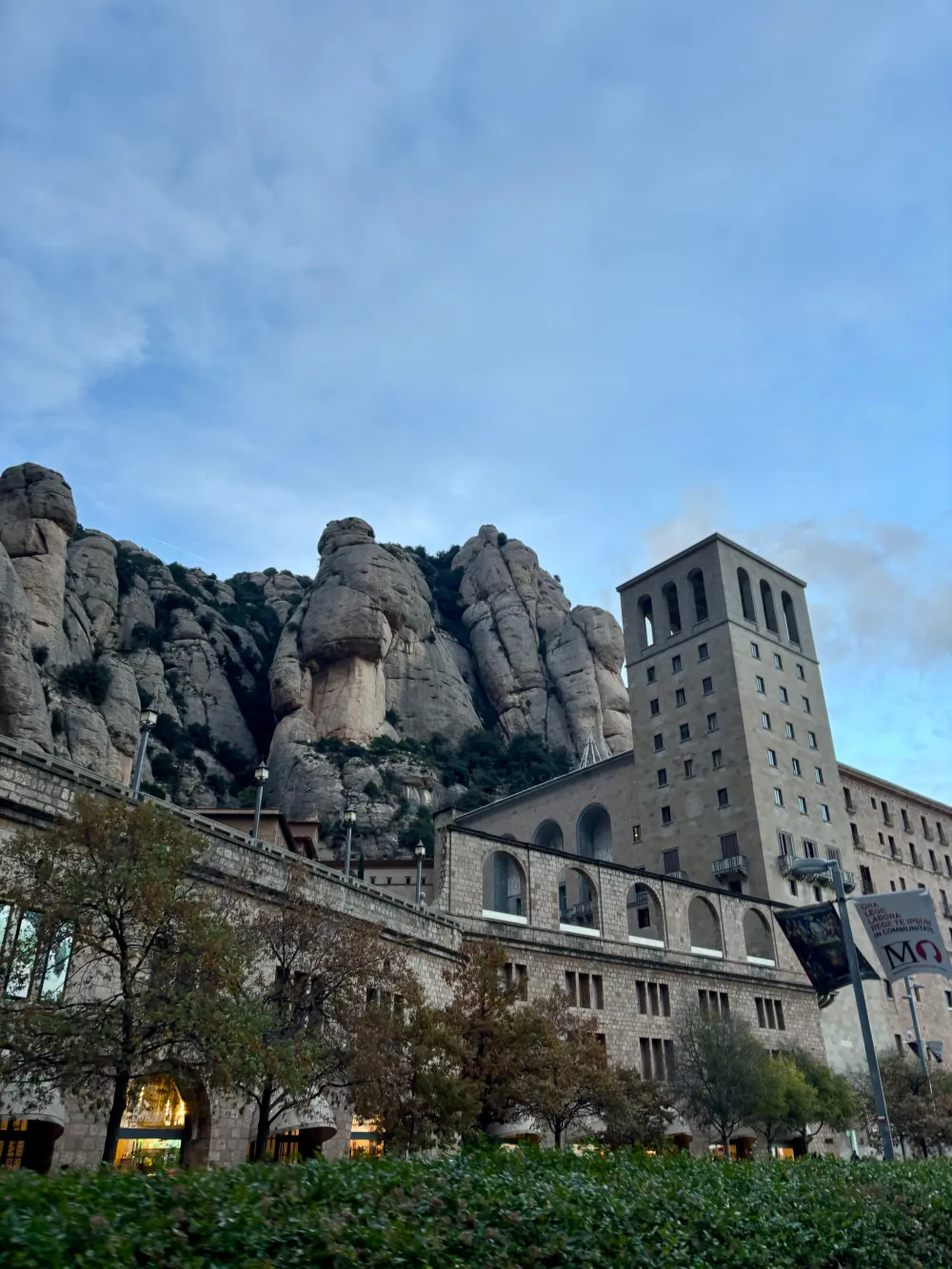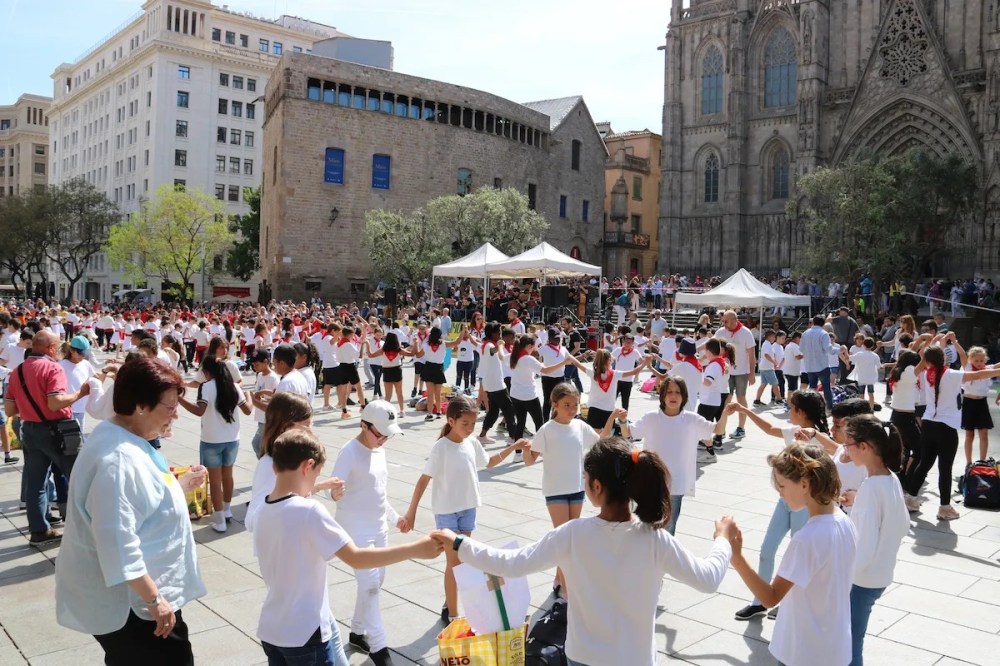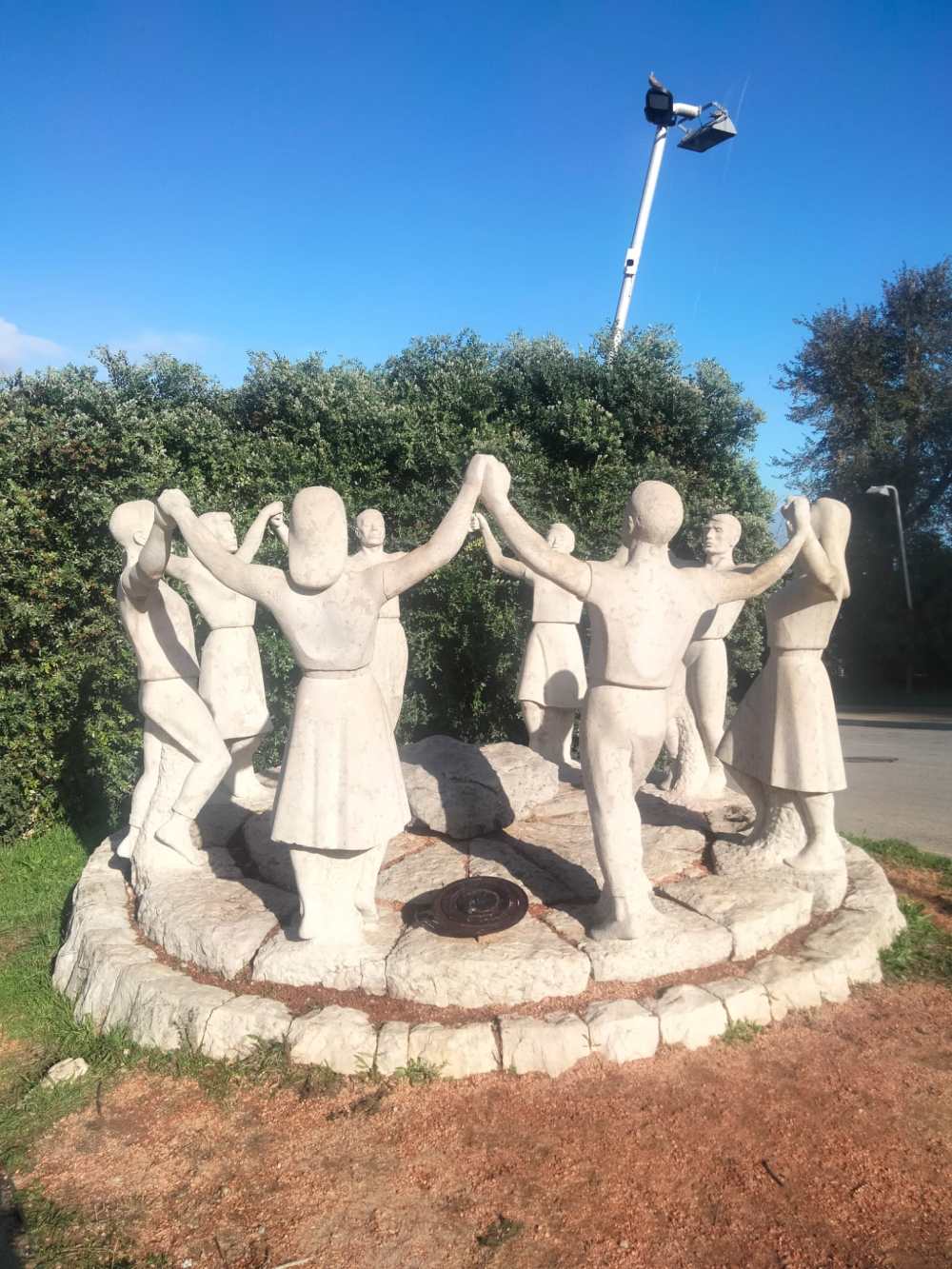Folk and Sardana: The Music and Dance that Define Catalonia’s identity.
Catalan music has a rich history closely linked to the identity and culture of Catalonia. Over the centuries, it has developed in various styles, from folk music to works by renowned composers.
Immerse yourself in this vibrant heritage by joining one of our curated Barcelona tours—Ultimate Barcelona: Private Full-day Tour or Barcelona Insider: Half Day Private Tour—and explore the essence of Catalan culture like never before.
An important element of Catalan musical life is the Orfeó Català, a choir founded in 1891. It played a key role in the revival of Catalan culture by promoting choral music and strengthening Catalan identity. Its headquarters is the Palau de la Música Catalana, one of the most important buildings in Barcelona.

Santa Maria de Montserrat Abbey
It is also worth mentioning the anthem of Catalonia, “Els Segadors” (The Reapers), which reflects Catalonia’s historical struggle for independence in the 17th century. Based on folk melodies, it became a symbol of Catalan determination and freedom, playing an important role in national and regional ceremonies.
The significance of church music in Catalonia cannot be overlooked, particularly in the Montserrat region, home to one of the oldest sanctuaries in Europe. The Escolania de Montserrat, a boys’ choir with a long history, performs religious and folk music, attracting pilgrims from all over the world.
A contemporary icon of Catalan music is Joan Manuel Serrat, one of the most prominent composers and performers in Catalonia. His works combine poetry with music, and his songs in both Catalan and Spanish, such as “Mediterráneo”, have become classics.
Now, let’s focus on one of the most characteristic elements of Catalan musical culture. While many have heard of Flamenco, a popular art form with a long tradition that has been recognized by UNESCO as an intangible cultural heritage, fewer know that Catalonia has its own local dance, and it’s not Flamenco.
The dance is called Sardana, which is performed in a circle, accompanied by music played by bands called cobla, made up of wind instruments. Sardana symbolizes unity and national pride for the Catalans. It is performed at many festivals and celebrations throughout Catalonia.
For Catalans, Sardana is primarily a social activity that brings people together. Dancers, both men and women, hold hands, forming a circle. The steps in the dance are precisely counted, consisting of two- or three-step movements to the side within the circle. The movements alternate, and hands are held at the level of the hips or shoulders, depending on the step. This allows the circle to naturally expand as more people join the dance, giving it a communal ritual feel. At any moment, the circle can grow larger as more people join the dance.

A group of children dancing the Sardana. Photo credit: www.totbarcelona.cat (https://www.totbarcelona.cat/es/cultura-ocio/sardana-the-tyets-catedral-barcelona-2-351655/)
Although there is some uncertainty regarding the exact origins of the Sardana, it is generally accepted that its closest predecessors were contrapàs and the short Sardana. Contrapàs is a religious, long dance performed in a row with alternating steps, set to religious music. Sardana, in contrast, is a circle dance with precisely counted steps and livelier music played by the cobla ensemble. It is shorter and more social, typically performed at festivals.
In the 1920s, Francesc Cambó, a Catalan politician and cultural patron, promoted the La Mercè festival as a celebration for all of Catalonia, which helped spread the dance that was performed at the time. Sardana became a symbol of identity, especially during the dictatorship, when it was used as a pretext for repression.

A monument on Montjuïc depicting Catalans performing the traditional Sardana dance
Today, Sardana is the most popular dance in Catalonia. Festival programs usually include a ballada, a public dance session in the central square during the festival. It’s also important to note the aplecs, gatherings of Sardana dancers with a long tradition. There are two types of associations: one promotes Sardana by organizing ballades, concerts, courses, and maintaining historical archives and music sheets, while the other, colles sardanistes, focuses on competing in various contests and excelling in the dance.
In many cities in Catalonia, such as Barcelona, Lloret de Mar, and Calella, you can find monuments depicting Sardana dancers. This dance is performed on the streets during important events, such as in Barcelona, where on February 12th, on the feast of St. Eulalia, Cobla Ciutat de Barcelona organizes a dance at Plaça de Sant Jaume. The dance ends with the performance of the Santa Eulàlia dance, which coincides with a procession of gegants (giants).
Today, Sardana is danced every Saturday in Catalonia, and in Lloret de Mar, it is also performed during the local festival of St. Christina on July 24th. In Calella, dancers meet on Sunday evenings. Although this dance is particularly popular among the older residents, it contrasts with the large number of young tourists in Lloret de Mar.
